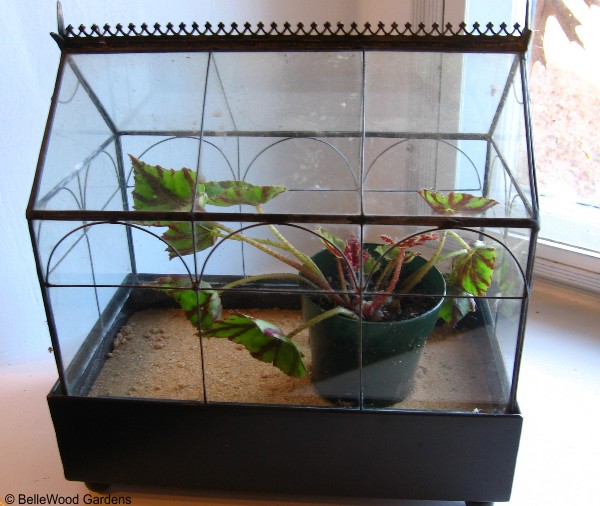
Photograph Credit Joan Carter 2008
Wednesday, 19 November 2008
Terrariums

Photograph Credit Joan Carter 2008
Would you like a little greenhouse, one you could keep on a table?
Call it a terrarium, and it's yours.
Imagine a time before plastic bags. You're on a sailing vessel on the other side of the world, trying to bring some plants back alive. Seeds travel just fine, dormant bulbs and tubers can survive. Plants in active growth are another story. Up on deck in the sunlight, salt spray is an issue. Down below, and the lack of light is a different problem. Furthermore, fresh water is in limited supply.
Then in the 19th century a British doctor, Dr. Nathaniel Ward, made an interesting discovery. The ferns in his London garden grew poorly, damaged by heavy air pollution that was a consequence of coal used for heating. The good doctor was a naturalist fascinated by insects as well as plants. In the bottles where he reared moths, he found that fern spores were germinating and growing in a soil. He had a carpenter build glazed wooden case, and found that ferns thrived when grown in it. With the new Wardian cases, moisture condensed within the case, watering the plants which were at the same time protected from noxious atmosphere - and from salt spray on a sailing ship. In 1833 Dr. Ward sent plants to Australia. They arrived alive and well, and he got some interesting Australian plants back. Wardian cases soon became features of stylish drawing rooms in Great Britain and the United States.
Terrariums today have periods of popularity, and times when interest in them wanes. We used to make terrariums in narrow-necked glass bottles, dribbling soil in through a funnel and maneuvering plants with chopsticks when planting. Fascinating, but awkward. Open-mouth containers such as an outsize brandy snifter, a goldfish bowl, or an apothecary jar are easier to manage. Even better is a glass cloche, or bell jar, that can be set over a planted bowl.
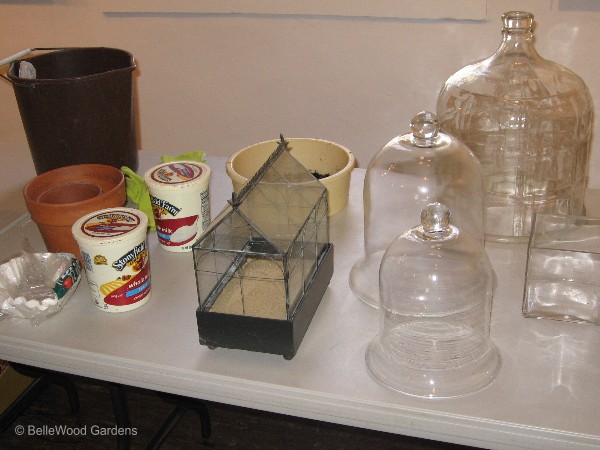
Photograph Credit Joan Carter 2008
Today I gave a presentation on terrarium planting for the Tohickon Garden Club.
A couple of cloches, a large glass water jug with the bottom removed, potting soil and pots,
and other necessary ingredients covered two tables. Plants are almost the last thing.
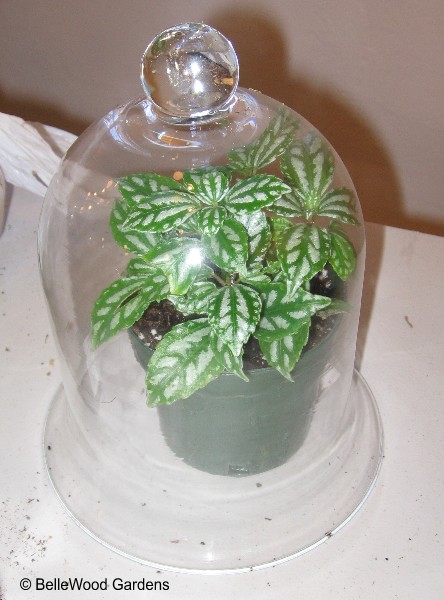
Photograph Credit Joan Carter 2008
Here's a nice little pilea in its nursery pot with a cloche for a cover.
A more attractive container would look better, but see how the glass enhances it.
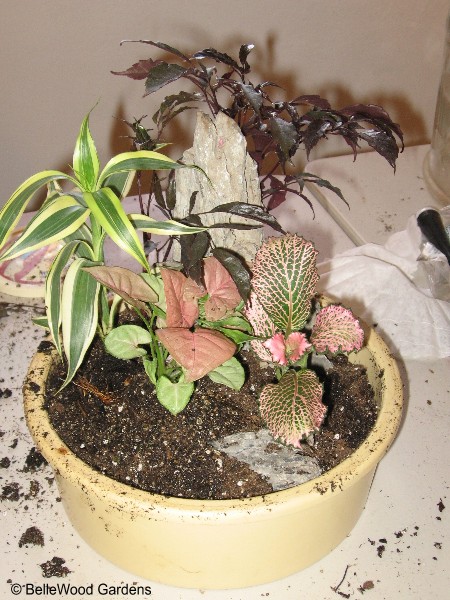
Photograph Credit Joan Carter 2008
In a closed container, whether glass bottle or plastic bowl, use a layer of coarse gravel
to serve as a sump for excess moisture. Scatter a couple of tablespoons of
rinsed aquarium charcoal. This protects against stagnation. Something is needed
to keep soil from sifting into the gravel. Where the planting container is opaque, as here,
I like to use coffee filters. If the container is glass, long fiber sphagnum looks more attractive.
Space is limited under glass, and exuberant plant growth will be a problem.
For this reason, I don't use fertilizer. Most potting mixes seem to contain several months
worth. It's easy to mix your own: 2 parts purchased top soil, 2 parts of a
commercial soilless mix of peat moss, perlite, and vermiculite, and 1 part coarse sand.
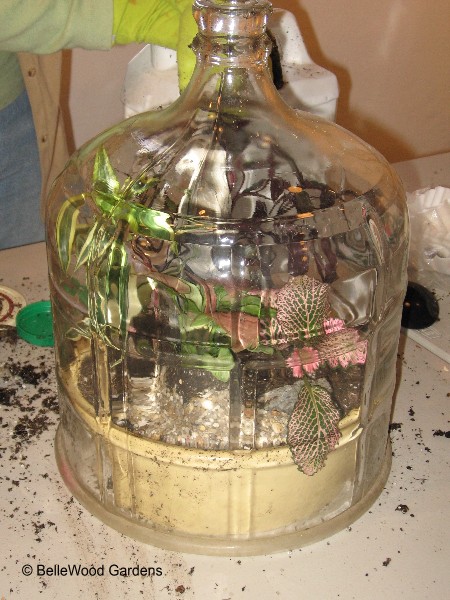
Photograph Credit Joan Carter 2008
Spray lightly after planting, then cover. Keep your terrarium in good light
but out of sunlight. Think of your car, parked in the sun even on a chilly day.
Glass containers similarly trap the heat and can overheat the plants.
Should there be too much condensation, lift the lid for a few hours.
If you think it is too dry, mist gently. The terrarium will develop a balance
and need remarkably little care. Keep things even simpler by choosing
foliage plants such as peperomia and pilea, little ferns, and selaginella.
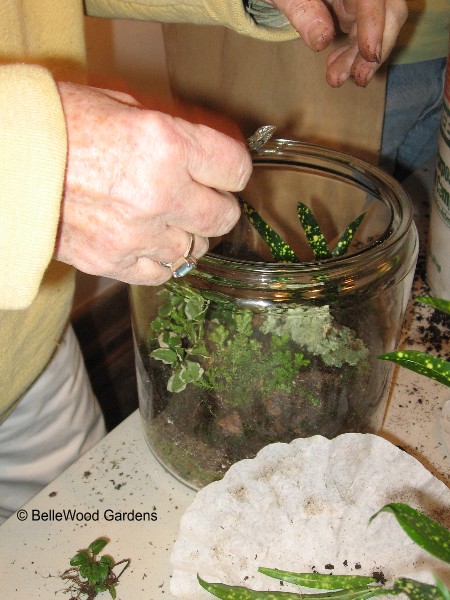
Photograph Credit Joan Carter 2008
One of the garden club members puts the finishing touches on her terrarium.

Photograph Credit Joan Carter 2008
It's not a real frog, just a small decorative object to enhance this garden under glass.
We all had a good time. Just maybe, next year's flower show will have a terrarium class.